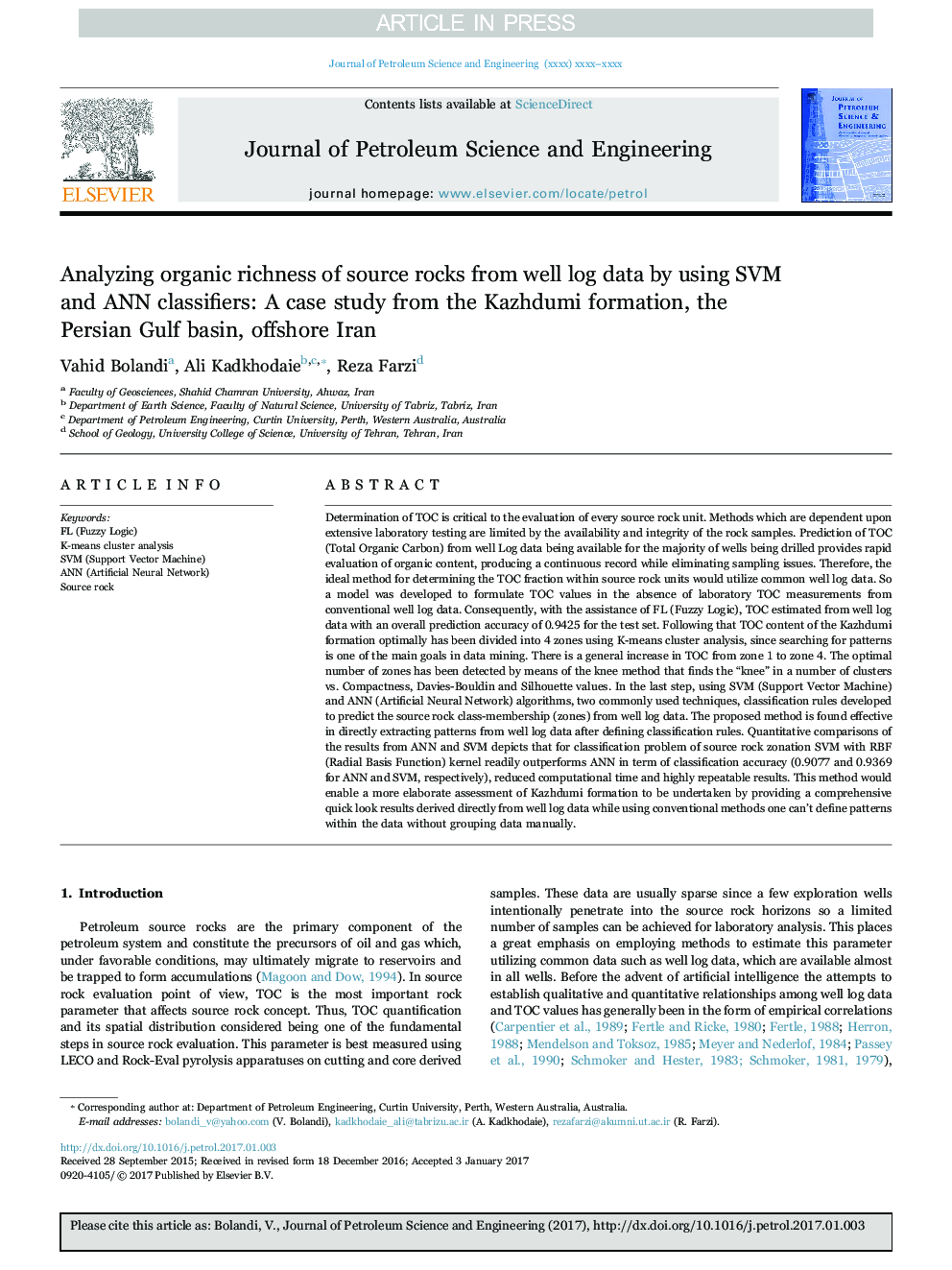| کد مقاله | کد نشریه | سال انتشار | مقاله انگلیسی | نسخه تمام متن |
|---|---|---|---|---|
| 5484375 | 1522790 | 2017 | 11 صفحه PDF | دانلود رایگان |
عنوان انگلیسی مقاله ISI
Analyzing organic richness of source rocks from well log data by using SVM and ANN classifiers: A case study from the Kazhdumi formation, the Persian Gulf basin, offshore Iran
دانلود مقاله + سفارش ترجمه
دانلود مقاله ISI انگلیسی
رایگان برای ایرانیان
موضوعات مرتبط
مهندسی و علوم پایه
علوم زمین و سیارات
زمین شناسی اقتصادی
پیش نمایش صفحه اول مقاله

چکیده انگلیسی
Determination of TOC is critical to the evaluation of every source rock unit. Methods which are dependent upon extensive laboratory testing are limited by the availability and integrity of the rock samples. Prediction of TOC (Total Organic Carbon) from well Log data being available for the majority of wells being drilled provides rapid evaluation of organic content, producing a continuous record while eliminating sampling issues. Therefore, the ideal method for determining the TOC fraction within source rock units would utilize common well log data. So a model was developed to formulate TOC values in the absence of laboratory TOC measurements from conventional well log data. Consequently, with the assistance of FL (Fuzzy Logic), TOC estimated from well log data with an overall prediction accuracy of 0.9425 for the test set. Following that TOC content of the Kazhdumi formation optimally has been divided into 4 zones using K-means cluster analysis, since searching for patterns is one of the main goals in data mining. There is a general increase in TOC from zone 1 to zone 4. The optimal number of zones has been detected by means of the knee method that finds the “knee” in a number of clusters vs. Compactness, Davies-Bouldin and Silhouette values. In the last step, using SVM (Support Vector Machine) and ANN (Artificial Neural Network) algorithms, two commonly used techniques, classification rules developed to predict the source rock class-membership (zones) from well log data. The proposed method is found effective in directly extracting patterns from well log data after defining classification rules. Quantitative comparisons of the results from ANN and SVM depicts that for classification problem of source rock zonation SVM with RBF (Radial Basis Function) kernel readily outperforms ANN in term of classification accuracy (0.9077 and 0.9369 for ANN and SVM, respectively), reduced computational time and highly repeatable results. This method would enable a more elaborate assessment of Kazhdumi formation to be undertaken by providing a comprehensive quick look results derived directly from well log data while using conventional methods one can't define patterns within the data without grouping data manually.
ناشر
Database: Elsevier - ScienceDirect (ساینس دایرکت)
Journal: Journal of Petroleum Science and Engineering - Volume 151, March 2017, Pages 224-234
Journal: Journal of Petroleum Science and Engineering - Volume 151, March 2017, Pages 224-234
نویسندگان
Vahid Bolandi, Ali Kadkhodaie, Reza Farzi,